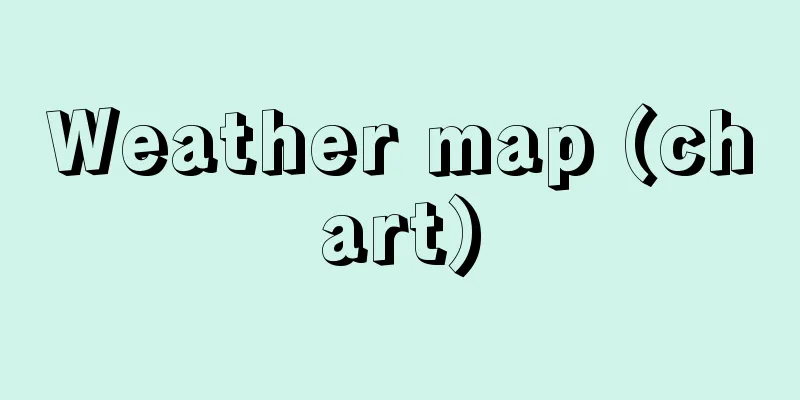Letter to editor

|
The act of sending a letter to a newspaper, magazine, or other mass media, expressing readers' opinions, impressions, hopes, and complaints about political movements and social events, or questioning irrational social systems. Or the letter itself. It is said that this term originated from ancient China, when people would throw slanderous letters to their homes (there were times when people would send letters to slander others, Taizu Shizhi, who wanted to know the main author, in the "Records of the Three Kingdoms" "The Biography of Guoyuan in the Wei Shu"). Sending a manuscript of haiku, tanka, or creative work is called a submission, which is different from a letter to the editor. In Japan, letters to the editor were actively sent by intellectuals from the early Meiji period, when newspapers and magazines began to develop, and political debates were actively carried out in the pages. However, after the late Meiji period, as newspapers became more commercialized, the letters to the editor column gradually decreased, and especially from the rise of fascism in the 1930s and 1940s to wartime, letters to the editor columns disappeared. After World War II, with the advent of the democratic era, letters to the editor were revived, and the mass media also began to make efforts to expand their letters to the editor columns. Letters to the editor are a means of two-way communication that allows readers, who currently only receive media reports one-way, to participate in journalism on paper and appeal to public opinion, and they play an important role in a democratic society. Therefore, when letters to the editor are dominated by certain writers, or when they are selected and published at the discretion of the media, their social function is not being fully fulfilled. In Europe and the United States, letters to the editor are very popular, with people from a wide range of social classes writing about a variety of issues, and the media welcomes these letters, calling them "letters to the editor," and uses these opinions, impressions, and requests as reference for improving their publications. In the late 18th century, anonymous letters published in the British newspaper The Public Advertiser, known as the "Junior Letters," became famous for their criticism of the ruling class of the time. [Masao Takasu] "A Theory of Letters to the Editor, by Saburo Kageyama (1968, Modern Journalism Publishing Association)" "Newspaper Readership in Modern Japan, by Taketoshi Yamamoto (1981, Hosei University Press)" [References] |Source: Shogakukan Encyclopedia Nipponica About Encyclopedia Nipponica Information | Legend |
|
政治の動きや社会的事件について読者が自分の意見、感想、希望、苦情を述べたり、社会の不合理な仕組みについての疑問をただしたりする文書を、新聞、雑誌などマス・メディアへ送ること。またはその文書。古代中国で他人を誹謗(ひぼう)する文書をその家へ投げ込んだことから、このことばがおこったともいう(時有投書誹謗者、太祖疾之、欲必知其主『三国志』「魏(ぎ)書国淵伝」)。俳句、短歌、創作などの原稿を送ることは投稿とよび、投書と区別している。わが国では新聞、雑誌が発達し始めた明治初期から知識人による投書が盛んに行われ、紙上で政治論争が活発に展開された。しかし、明治後期以後、新聞の企業化が進むにつれ投書欄はしだいに縮小、ことに1930~40年代のファシズムの台頭から戦時にかけ投書欄は影を潜めた。第二次世界大戦後、民主主義時代の到来とともに投書は復活し、マス・メディア側も投書欄の拡充に努めるようになった。投書は、マス・メディアの報道を一方的に受けるだけの現在の読者が、紙上でジャーナリズムに参加し、世論に訴えかけることのできる双方向コミュニケーションの手段であり、民主主義社会の重要な機能を担っている。したがって、投書が特定の投書家によって占められたり、メディア側の恣意(しい)によって選択、掲載されるようなときは、その社会的機能が十分に果たされないことになる。 欧米では投書活動が活発で、幅広い階層の人々が、さまざまな問題について投書し、メディア側も投書を「編集者への手紙」とよんで歓迎するとともに、それらの意見、感想、希望を紙面改良の参考に役だてている。18世紀後半、イギリスの『パブリック・アドバタイザー』The Public Advertiserに掲載された「ジュニアス・レターズ」とよばれる匿名の投書は、当時の支配層を批判して有名となった。 [高須正郎] 『影山三郎著『新聞投書論』(1968・現代ジャーナリズム出版会)』▽『山本武利著『近代日本の新聞読者層』(1981・法政大学出版局)』 [参照項目] |出典 小学館 日本大百科全書(ニッポニカ)日本大百科全書(ニッポニカ)について 情報 | 凡例 |
Recommend
June Uprising
An anti-government riot started by craftsmen and w...
Scattering - Sanran (English spelling)
When a wave strikes a tiny particle, it generates...
Usunekase - Usunekase
...When a new house was built, the mortar was bro...
Agrobacterium tumefaciens (English name) Agrobacterium tumefaciens
…A type of plant club disease caused by Agrobacte...
Saraceni, C. (English spelling) SaraceniC
...On the other hand, Caravaggio, a native of Lom...
Minezaki Koto
Years of birth: Years of birth and death unknown. ...
Club des Feuillants (English name)
The Fouillant Club was founded in July 1791, after...
Public interest
The public interest literally means the public in...
Kuriyama [village] - Kuriyama
A village in Shioya County, in the northwestern co...
Historical geography - English
A field of geography that uses documentary source...
Aizen Myoo
A statue belonging to the Wrathful or Myo-o sects...
Ikuta Style
…Currently, there is a tendency to call all style...
Esashi [town] - Esashi
A town in Esashi County, northern Hokkaido. Facing...
Gosu
Also written as Gosu. A type of painting pigment ...
Introduction breeding
A method of breeding. It refers to the process of ...









